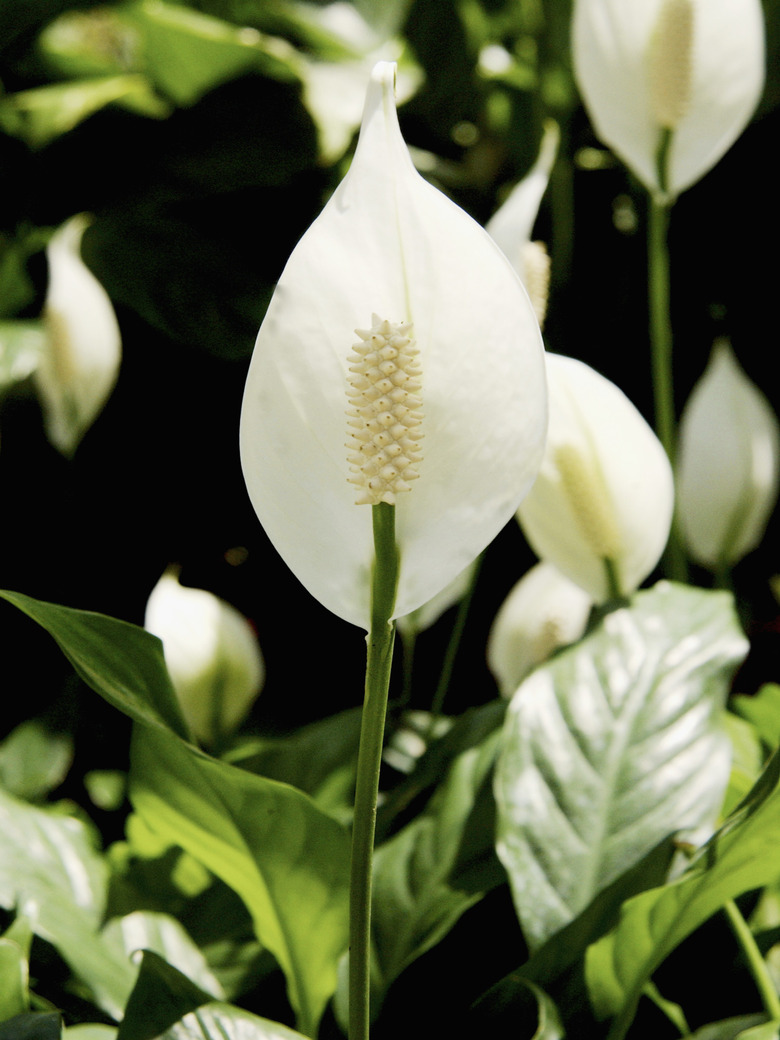White Powder Fungus On A Peace Lily
With their large, distinctive white blooms, peace lilies come into prominence around the Easter holiday but remain lovely all year long. While lilies require little maintenance to thrive, you should still be on your guard against infection by white powdery fungus.
Peace Lily
Peace Lily
Prized for their large dark-green leaves and unmistakable blossoms, peace lilies are popular plants in the garden and the home. Because they require little exposure to direct light and don't need frequent watering, they can be tucked away in poorly lit rooms or shady corners of a yard and still do well. While a peace lily is easy to care for, it's still at risk for problems like infestation by gnats or infection by powdery mildew.
Powdery Mildew
Powdery Mildew
Powdery mildew is a mild fungal infection that attacks everything from grass and crops to houseplants. When it first appears, you'll see a few white specks on the upper side of the leaves. As the infection worsens, the white fuzzy spots spread until the plant looks like you've dusted it with flour. While powdery mildew is rarely deadly, it is unsightly, can deform new leaves and blooms, and causes leaf drop.
Solutions
Solutions
Create your own fungicidal solution to get rid of powdery mildew on your peace lily. Create a solution of 1 part milk to 9 parts water and spray it on infected leaves every 10 days until the infection clears. A solution of 1 tsp. of baking powder, 1 tsp. of liquid dish soap and 1 qt. of water also kills powdery mildew without harming the lily. Apply it every week or so. When spraying either solution, also spray a thin border of healthy tissue on the infected leaves to prevent the fungus from spreading.
Considerations
Considerations
While either spray can be used indoors or out, the milk spray tends to work best outdoors. This eliminates the risk of developing an odor of sour milk inside your home while treating your peace lily. If the infection doesn't clear up in a few weeks, you'll likely need to replace the infected plant. The kind of powdery mildew that attacks peace lilies is unique to lily plants, so don't worry about it spreading to your lawn or other houseplants.
References
- "The Horticulturist's Guide"; Bryant Sanchez; 2010
